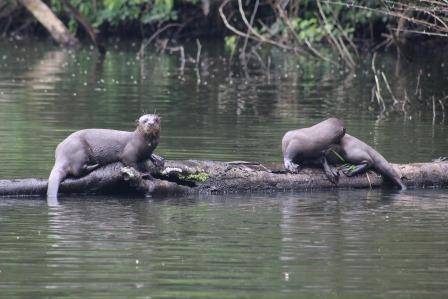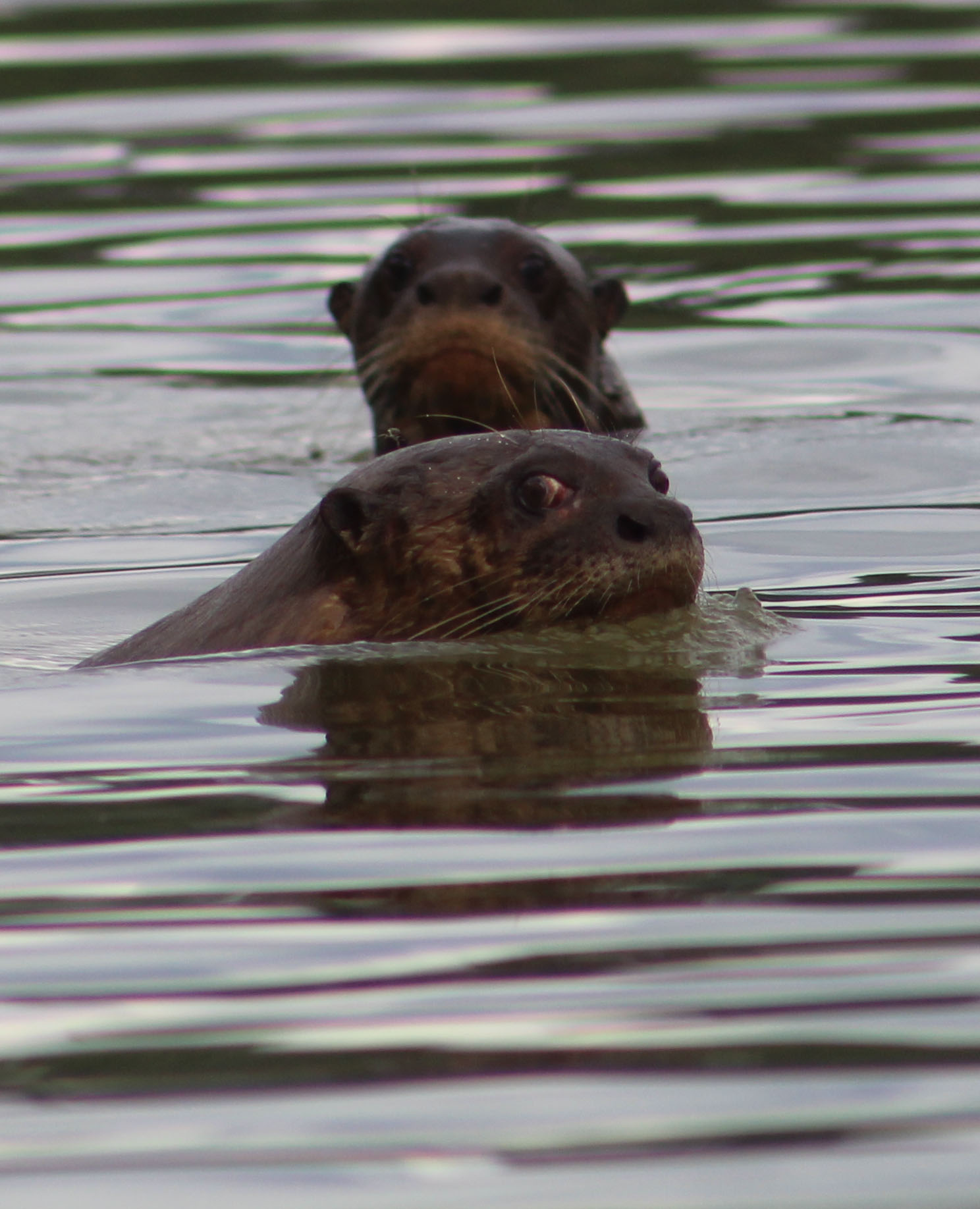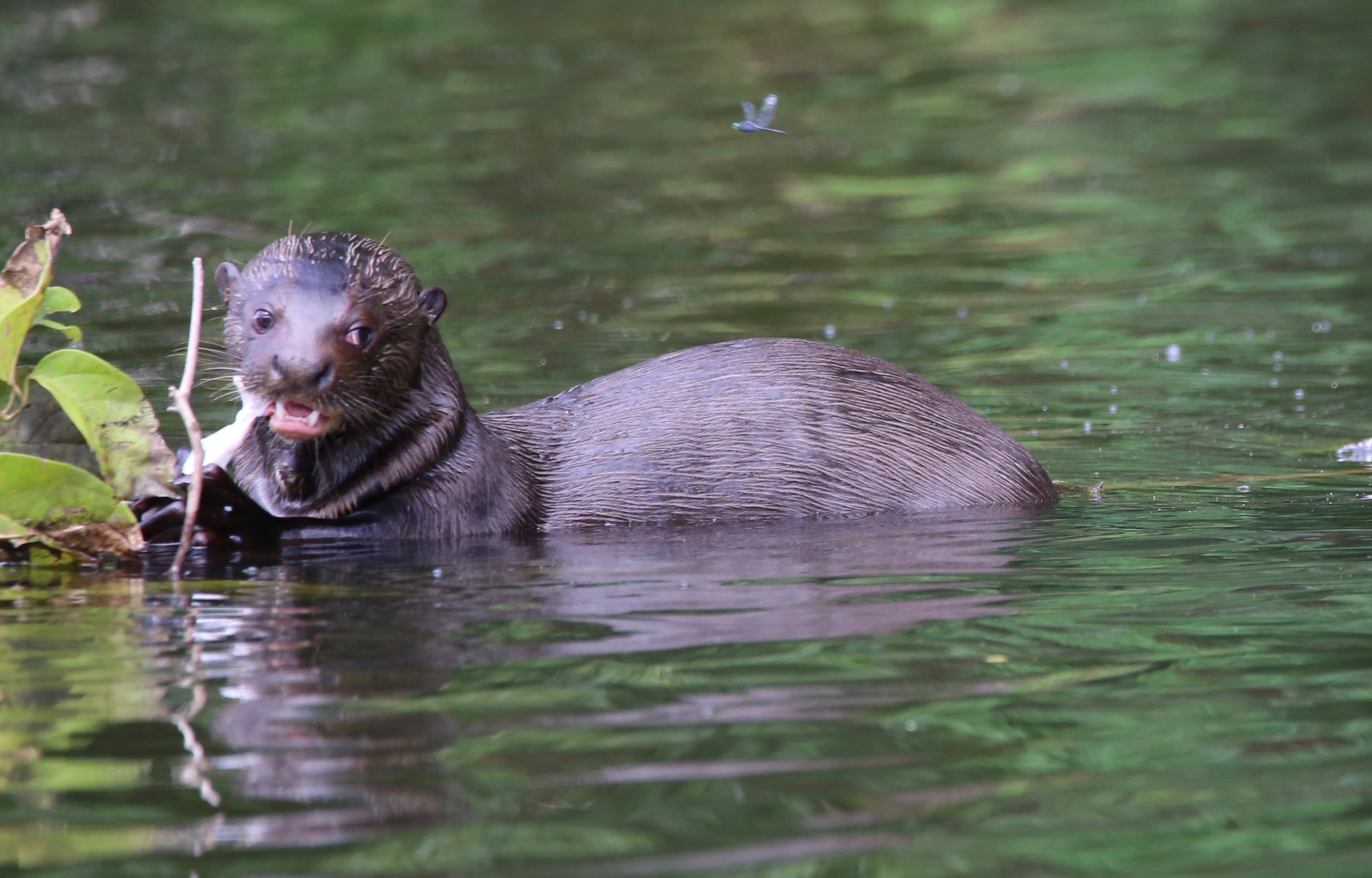Research
Giant Otter Project
The giant otter, an endangered apex predator in Amazon river ecosystems, was nearly driven to extinction because of demand for its fur. Following the banning of fur trade, giant otter populations have recovered across South America. However, there are several emerging threats to this sensitive species.
The Problem
Illegal gold mining activities and deforestation have severely affected the habitat of giant otters in the Peruvian amazon. However, the effects of these human threats on giant otter populations are not well understood. Giant otters can be affected by mining and deforestation directly through the degradation of the river banks they inhabit, and indirectly, through reduced availability of fish and bioaccumulation of mercury.
The Solution
The mission of the giant otter research team is to understand if and how the demography, behavior and health of giant otters are affected by the recent changes to their habitat. To achieve this, the team is conducting observations, concurrent with non-invasive sampling, on several giant otter family groups both in a protected area, within Manu National Park, and areas outside the park, which are subject to different degrees of mining activities. An important component of this project is the involvement and engagement of local indigenous communities in conservation efforts. The international research team is led by Adi Barocas and composed of several Peruvian members.
This project is a collaboration between the San Diego Zoo Institute for Conservation Research and WildCRU. Additional partners are the Peruvian National Parks authority (SERNANP), the Frankfurt Zoological Society and SePeru, a non-governmental organization whose mission is developing sustainable activities among local communities.
Latest news from the Project
January 2019 Working with local communities in Peru’s Amazonian gold mining area
July 2017 Looking for giant otters in mined areas of the Peruvian Amazon
-

-

-
 © Ron Swaisgood
© Ron Swaisgood





